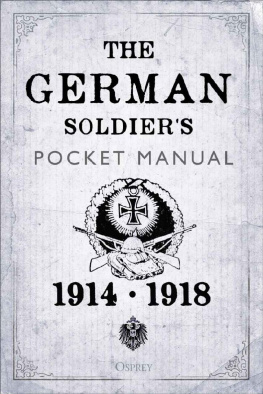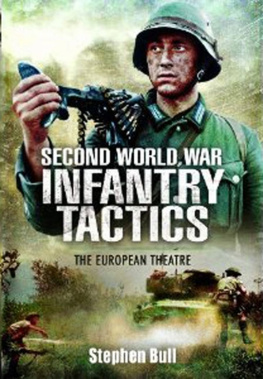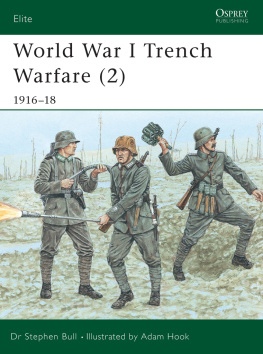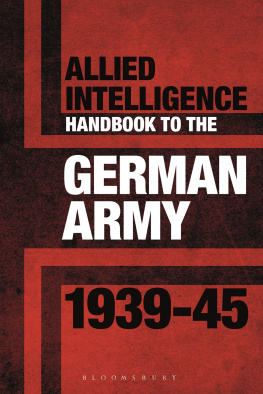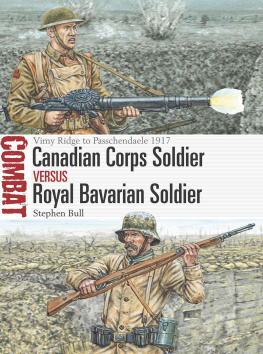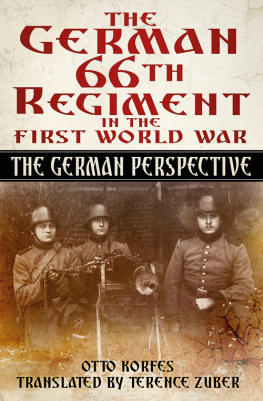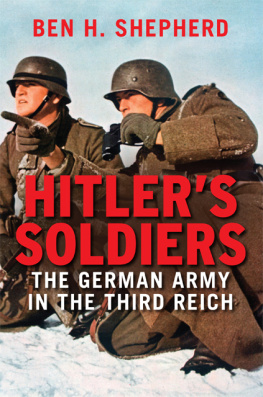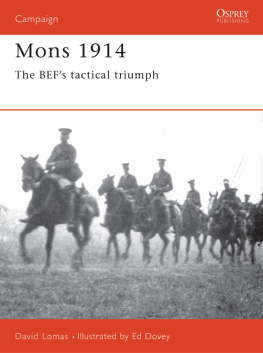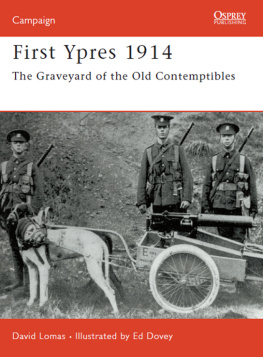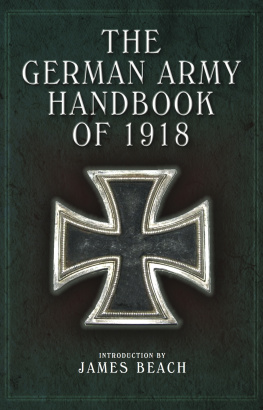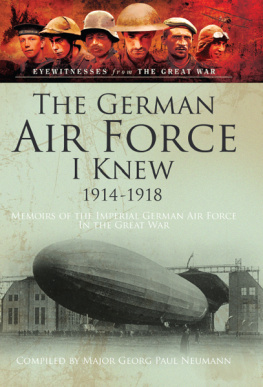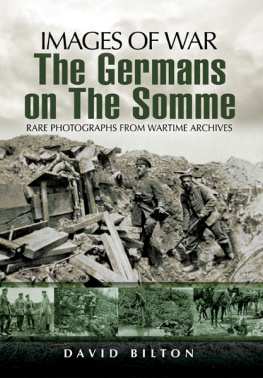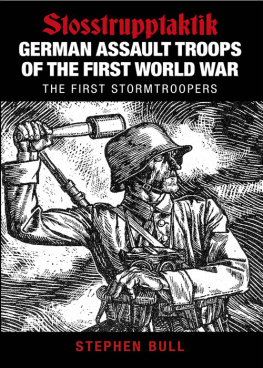
Contents
A number of individuals and institutions have helped make this manual possible. I should particularly like to thank Johannes Bayer, the librarian, and Carmen Boehm of the Bayerisches Armeemuseum (Bavarian Army Museum), Ingolstadt, whose knowledge of sources and kind hospitality at the museum library are hugely appreciated. The assistance of Dot Boughton (ne Bruns) a former colleague at Lancashire Museums has also been invaluable.
The documents in this book include both complete and edited examples. Omissions from the originals are signified by elipses in the text.
In 1914 the German Army was arguably the most potent war machine in the world. With a standing peacetime strength of 840,000 men, it was larger than the armies of France, Italy or Austro-Hungary, and considerably larger than those of Britain or the USA. Though smaller than the Imperial Russian Army, it was better equipped and supplied, deployed more effectively by means of the modern German rail network, and was better led. As the Prussian Army had been the primary instrument of German unification, culminating in the declaration of the King of Prussia as German Emperor or Kaiser in January 1871, the German Army was recognised as an essential pillar of the new state. At the outbreak of World War I the titular supreme commander was Kaiser Wilhelm II, King of Prussia, who also assumed command of the Bavarian, Saxon and Wrttemberg contingents in times of conflict.
The core of the Imperial German Army was its General Staff. Its operations section not only transmitted directions and correspondence from the Chief of the General Staff, senior professional officer under the Kaiser, but also supervised the organisation and training of the Army, and processed its operational plans. Other sections and subsections of the staff dealt with intelligence, equipment, munitions and the various arms of service. In August 1914 German military forces were divided into separate armies: the First to Seventh armies facing west, the Eighth Army to the east. The armies were made up of 24 corps created in a similar number of regional districts. Corps in their turn were built of divisions.
In 1914 the standard infantry division had two infantry brigades, each with two regiments of three battalions each. The usual division was therefore 12 battalions of infantry, plus a Jger battalion of light (literally hunter) infantry; an artillery brigade, and specialists including pioneers and engineers. Huge expansion of the German Army during the war saw the raising of fresh armies and a total of 251 divisions, though not all were in existence simultaneously and divisions were reduced to three regiments. Given the total nature of a struggle fought on two major and several minor fronts, there was unrelenting demand for new recruits. Peak wartime strength of all branches of the German Army reached about eight million men.
Though no nation foresaw the sort of war that occurred on the Western Front, the German Army had technical branches as advanced as any, and its heavy foot ( Fu ) artillery in particular was a world leader. Largest of all the Armys guns in 1914 were the 42cm howitzers popularly known as the Dicke Bertha (fat or big Bertha), so named after Bertha Krupp von Bohlen und Halbach (18861957), daughter of armaments and industrial magnate Friedrich Alfred Krupp. These pieces came to particular prominence during the suppression of the Belgian forts during the 1914 summer campaign, but the heavy artillery also included 21cm Mrser (also more readily defined as heavy howitzers in English) and 15cm and 10cm howitzers, as well as other guns. The field artillery had mainly 7.7cm guns and 10.5cm light field howitzers. Contrary to popular belief, the artillery was a bigger killer than machine guns, the numbers of which also grew exponentially during the war. Though not yet much manufactured, a heavy trench mortar had also been developed before 1914 and a small stock of hand grenades was held for use by pioneers.

The 7.7cm gun was standard issue to the German field artillery in 1914, and in various improved models was still serving in 1918. It was capable of firing a variety of shells including shrapnel and high explosive.

The mechanism of the issue G98 bolt-action rifle with its five-round integral magazine, from the manual Der Gute Kamerade , Berlin 1915.
Dashing as the mounted branch appeared with its regiments of Krassiere (cuirassiers), dragoons, ulans, hussars, Jger zu Pferde, as well as Bavarian and Saxon heavy cavalry and Bavarian Chevaulegers , it was the infantry that formed the bulk of the Army in 1914. Though there were career officers and non-commissioned officers, plus some one year volunteers, the standing army was fuelled mainly by conscription. At 18 years of age German males became liable for service, and, if selected from the annual tranche, joined the standing army at 20. The states provided men in proportion to their populations, with Prussia raising the bulk (78 per cent), Bavaria 11 per cent, Saxony 7 per cent, and Wurttemberg 4 per cent of the total.
Infantrymen served two years with the active army, cavalry and artillerymen three, before moving into the reserve. Infantry were reservists for five years, the artillery and cavalry four, all being expected to undertake yearly training. At the age of 27 liability was reduced with men accounted Landwehr until the age of 39, and finally Landsturm (general draft) from 39 to 45 years. In a state of emergency all categories could be called upon to take the field and the period of service was unlimited. Men who had been passed over previously could also be inducted.
Pre-war training moved in yearly cycles, culminating in the Kaisermanver a full-scale army manoeuvre in the presence of the Emperor. Instructional literature was of three main varieties: official volumes produced by the relevant War Ministry and the General Staff; volumes from commercial publishers, often based on official documents or updated historic texts; and newly compiled unofficial material, usually by serving or former officers. Recruits were normally expected to purchase a basic manual to support their own training: typical examples included Dienstunterricht des Deutschen Pioniers by Major von Rabenau and Dienstunterricht des Bayerischen Infanteristen by Oberst Otto Schulz. Transfeldts Dienstunterricht fr Kriegsrekruten der Deutschen Infanterie proved particularly popular, reaching its 52nd edition by early 1917. Most of these volumes included a history lesson on past glories; a note on the Empire and its geography and military organisation; and some summaries of aspects of basic training. These last generally focused on the skills of rifle shooting and marching; military discipline; maps; uniforms and equipment. The yearly training schedule began with the individual and worked up to small units, then companies and battalions.

The model 95 Tornister or backpack. In standard use by the infantry at the outbreak of war, it was still seen, often in simplified forms, in 1918. The manual illustration from Der Gute Kamerade , Berlin 1915, shows how various items including spare cartridges, food, coffee, field cap, shirt, wash kit, boots and camping equipment are packed.
Next page
